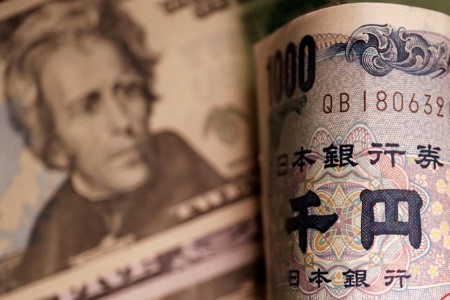




Philippines Trade Update: Trade trajectories trend along
 DOWNLOAD
DOWNLOAD

Policy Rate Updates: Double cut finale
 DOWNLOAD
DOWNLOAD

Monthly Economic Update: One for the road
 DOWNLOAD
DOWNLOAD


Dollar gains on rate outlook, yen weakens for third day

NEW YORK/LONDON – The dollar gained on Wednesday as investors bet on the US economy outperforming peers and was higher for the third day against the Japanese yen, keeping investors wary of the risk of intervention from Tokyo.
In Europe, the Swedish crown came under pressure after the central bank cut interest rates and said it expected two more cuts this year, while the pound was stuck in negative territory ahead of a Bank of England meeting on Thursday.
The move in Sweden was a reminder that the dollar is likely to remain strong as long as other central banks cut rates before the US Federal Reserve.
The yen remained front of mind for currency traders as Japanese officials issued a stronger warning over the impact of the weak currency on the economy.
“Carry trades are still attractive and the market is still more inclined to buy the dip in dollar/yen,” said Vassili Serebriakov, an FX strategist at UBS in New York.
“I don’t think the market is ignoring the risk of intervention, but … unless there’s a significant change in the US economic outlook we don’t think there will be a significant change in the setup for the FX markets either,” Serebriakov added.
Analysts have said any intervention from Tokyo would only offer temporary respite for the yen, given the wide gap between interest rates in the US and Japan.
Traders believe Japanese authorities spent some USD 60 billion last week on propping up the yen after it hit its weakest in 34 years against the dollar around 160 yen.
The dollar was last up 0.59% against the yen at 155.6, up from last week’s low of 151.86.
FED ABOVE ALL
Investors are focused on the pace and timing of Fed rate cuts. The latest data showing weaker-than-expected US jobs creation, together with an easing bias from the US central bank, have cemented expectations that rates will likely be lower by year-end.
The dollar was last up 0.11% at 105.54 against a basket of currencies, above last week’s one-month low. The euro dipped 0.08% to USD 1.0745. Sterling weakened 0.1% to USD 1.2492.
In the meantime, central banks in Europe have already started cutting interest rates. The Swiss National Bank cut in March ahead of Wednesday’s move by Sweden’s Riksbank.
The European Central Bank has signaled its intention to cut in June, assuming the data points in the right direction, and the BoE is gradually smoothing the way to its first cut.
“What we’re looking at is a raft of European central banks going over the next few months, whether or not it’s June, or August. We’ve got a near 50% chance of the Fed cutting in September, but I think that’s probably the one that could get pushed out,” XTB research director Kathleen Brooks said.
“For now, and particularly today, the focus is on Europe cutting first and we’re seeing that upward pressure on the dollar,” she said.
While traders are pricing in an expected Fed rate cut in September, that move will also depend on whether inflation continues to ease back closer to the US central bank’s 2% target.
“It’s going to be hard to go more dovish from here in terms of Fed expectations I think in the near term and that’s why that bias to buy the dollar is still going to be in place,” said UBS’ Serebriakov.
Boston Fed President Susan Collins said on Monday that the current setting of monetary policy would slow the economy in the way she believed would be necessary to get inflation back to the target.
In cryptocurrencies, bitcoin fell 0.77% to USD 62,480, set for a fourth daily loss, its longest stretch of daily declines so far this year.
(Reporting by Karen Brettell; Additional reporting by Amanda Cooper; Editing by Chizu Nomiyama, Toby Chopra, and Alison Williams)
This article originally appeared on reuters.com





 By Reuters
By Reuters